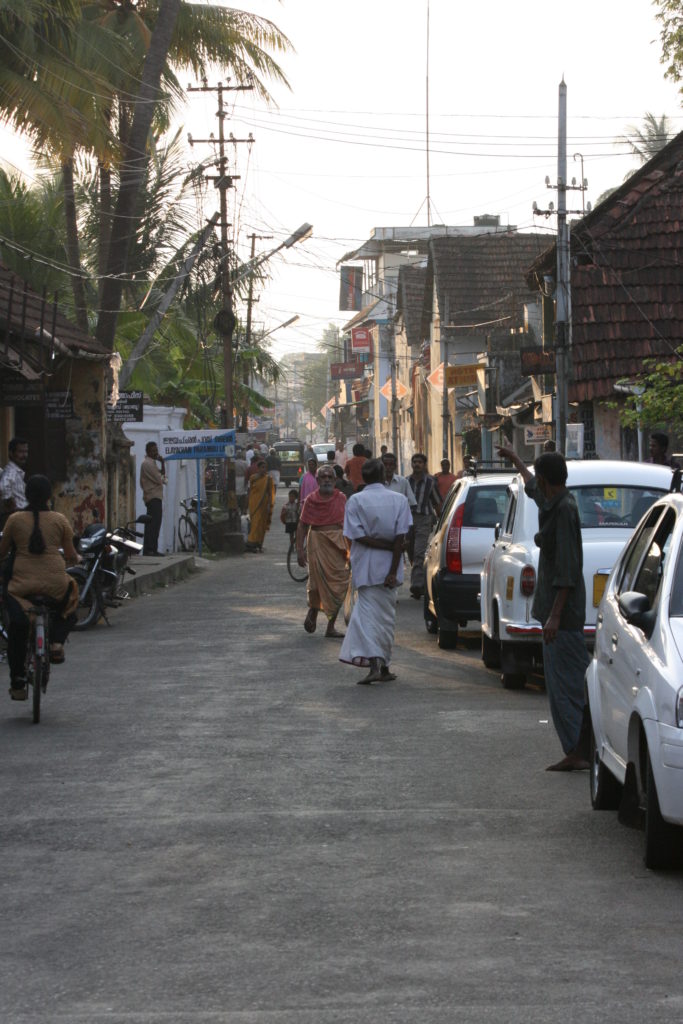 I have seen a dead rat and a dead goat – both of which might well have died of old age – and one car accident that looked kind of ugly but other than that we haven’t seen any accidents. This is truly amazing given the way transportation is functioning here.
I have seen a dead rat and a dead goat – both of which might well have died of old age – and one car accident that looked kind of ugly but other than that we haven’t seen any accidents. This is truly amazing given the way transportation is functioning here.
Those who have traveled to Asian and a few other places around the world know this all to well but for those who haven’t see it I’ll try and describe it. Picture Boston – well-known for its aggressive drivers in the US – or picture pretty much any town, village, city, hamlet in Germany – everybody drives aggressively there – on a full-moon which I hold – against all better judgement and scientific evidence – makes people crazy. Also imagine the daily newspaper featuring a front page article saying something like: “No traffic fines today!” with a subheader reading “Police encourages drivers to test the limits of their skills and vows not to impose any traffic fines until midnight”. Next replace about 50% of the cars by three-wheelers and motorcycles and confiscate about 80% of all helmets and tell the drivers that it is their foremost responsibility to get from A to B quickly regardless of the consequences. Encourage pedestrians to walk on the roads maybe by promising cash prices for the most reckless behaviour. Then let a bunch of hungry animals loose. There you have it: traffic in India.

The difference is: there would be dead people and car wrecks lining the streets of Boston and Anytown, Germany but here – with this one exception – on a steep road in the mountains – we haven’t seen as much as a fender-bender. If I wasn’t such a staunch Darwinist I’d almost feel inclined to propose some kind of Lamarckism at work here – an old theory which postulated that learned behaviour is passed on to the next generation in some hard-wired fashion.
For the rickshaw drivers it is a badge of honor to drive on the wrong side of the road (whatever that might be in India) and try and squeeze through the tiniest openings between a cement truck and an overloaded bus with school kids from the province. Motorcycles generally hold up to 4 members of a family: older kid on the gas tank, helping daddy – right behind him/her – steer, then, in a position reminiscent of how the ladies rode their horses in Victorian England, the wife – in sari, sans helmet – holding the baby sort of casually with one arm and a weeks worth of groceries in the other.
As the groceries seem to contain ice cream or some other quickly perishing item the motorcycles by and large drive furthest on the wrong side of the street, passing a rickshaw that is passing a car which is passing a bus or cement truck. What must save the pedestrians – at least the women – are their bright saris in the many shades of orange, pink, red and purple that are seen from afar and since – generally – the goal of this whole exercise is not to kill people, motorized vehicles will swerve at the last split second to avoid the pedestrian. Don’t know how the men survive, I guess generally they drive.
Then there are the boats or ferries. Every time we enter one to make or trip to Old Kochi and Matanchery I can’t help but think of headlines I have read in the past along the lines of “Ferry sinks in Indonesia – 483 dead” only that in my head it is “Kerala” not “Indonesia”. An alternative possible headline – more for the local newspapers would be “Blonde blue-eyed baby boy drowned after stumbling over railing on ferry”. I never enter one without immediately checking for the life saver and I sit ready to snatch one at the slightest sign of trouble and stuff the so called “baby boy” in. Alternatively, of course, he could be mauled to death by the ferries engine which is completely exposed with sort of a railing around – or at least part of the way. You could drive a tank through the gap and for a little engineer it is very, very tempting to take a very close look at all those moving parts.
Other than that, transportation has been good so far. The planes were very clean, new and on time – always appreciated by a German. Our drivers were okay, the one who drove us from Munnar to Ernakulam would just need to learn that, when passing and trying to accelerate one ideally shouldn’t go 30 km/h in 5th gear but other than that – no problem. We are planning a trip to Varkala in the south, probably by train, next week (even Indians admit that the roads are somewhat in disrepair and so it might be more comfortable to take the train) so stay tuned for reports about transportation by train – or at least transportation by luxury train for foreigners as I am so done with the romantic notion that I have to experience life like the poor in India experience it.
Mixing Languages
Completely unrelated but sort of interesting – I find – is how the local language (Malayalam and in the more eastern parts also Tamil) gets mixed with English. Numbers, business and financial terms seem to only exist in English and so the typical conversation between two Malayalam speakers will sound something like “malayalammalayalammalayalam fifteen percent discount malayalammalayalam corporate rate malayalammalayalammalayalam three thousand rupees malayalammalayalammalayalam twentythird February malayalammalayalammalayalam credit card.
My Malayalam efforts are stuck with Noonie – thank you – although a teacher from the province and about 30 of his pupils – after they were done fussing over Max who was hiding – tried to teach me the basics such as their favorite “what is your good name?” and “where is your house?’ It’s useless. I can’t remember it. I’ll learn French before Malayalam and that’s saying a lot – my old classmates from high-school will be able to attest to my age old war with the French language and my undying contempt for any effort to teach it to me in any shape or form.
